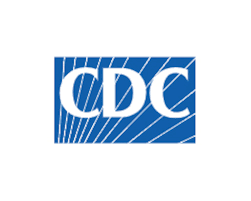The U.S. Federal District Court for Mid-Florida (Tampa) just threw out the CDC’s regulation requiring people to wear masks on public transportation. The court’s 59 page decision (see the Health Freedom Defense Fund v. Biden decision) found that CDC exceeded their statutory authority and didn’t follow the proper administrative procedures under the Administrative Procedures Act when they established the regulation.
The transportation mask requirement was definitely a needed public health intervention. We’re lucky that the lawsuit was filed late in the pandemic and that this decision came down after cases and hospitalizations had dropped precipitously. It’s likely that the CDC/Biden will appeal the decision to the appellate court system, so it’s possible that a higher court will keep the mask requirement in place pending hearing the appeal… but they also might not take the case and if they do, they might let the lower court ruling stand during the process.
We should know the answers to those questions soon… but in the meantime, it looks like masks will no longer be required on jets and other forms of public transport like subways and busses etc.
Meanwhile, in a separate but similar case, Arizona joined 20 other states filing a similar lawsuit in the same federal district court challenging the CDC’s 2021 emergency regulation requiring people over the age of two to wear masks on public transportation, airplanes, trains, and transport hubs like airports and train stations. [See the CDC Rules: 86 FR 8025 – Requirement for Persons To Wear Masks While on Conveyances and at Transportation Hubs 86 Fed. Reg. 8,025.].
Editorial Note: It’s curious that the plaintiffs in both cases chose to file in the same Tampa district court. It’s almost like they were shopping for a favorable judge, dontcha think?
The crux of the arguments in both cases is that CDC exceeded their statutory authority under the Public Health Service Act [42 U.S.C. § 264(a)]. Plaintiffs believe that law doesn’t authorize CDC to establish their emergency rule requiring masks in those environments. The suit also argues that CDC didn’t use proper administrative procedures when they established the rule (failing to consider lesser alternatives and not following the APA’s notice and comment requirements).
Once these two cases are fully adjudicated, we’ll get more clear information from the courts about the extent of the CDC’s authority to quickly establish rules during public health emergencies and whether there is latitude for the agency to take some shortcuts while establishing regulations during public health emergencies.
Note: According to Jennifer L. Piatt, JD, Deputy Director of the Network – Western Region Office, “…the US Supreme Court has already started to give us a sense of how broadly it views the CDC’s authority to act in times of crisis. In Alabama Association of Realtors v. HHS, the Supreme Court indicated that CDC did not have the authority to issue a nationwide eviction moratorium under the Public Health Service Act, 42 U.S.C. § 264(a). This is the same section at issue in this new case on transportation masking requirements. Alabama Realtors has thus already demonstrated that the Court is willing to limit CDC’s authority under this section of the Public Health Service Act (PHSA), and it’s possible that the Court’s language in that decision may illuminate or drive some of the lower courts’ interpretations in this case.”
Resource Note: When you have questions about public health law that come up in the course of your work, a terrific resource is the Network for Public Health Law. They are a terrific, free, resource that can help you think through your legal questions by researching laws and case law to help you make decisions. It’s not legal advice, but a terrific resource. Here’s a place to start when you have questions: How We Can Help – Network for Public Health Law.



